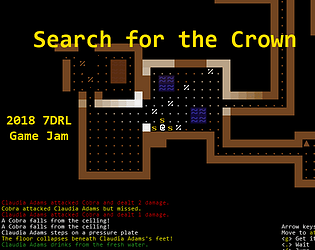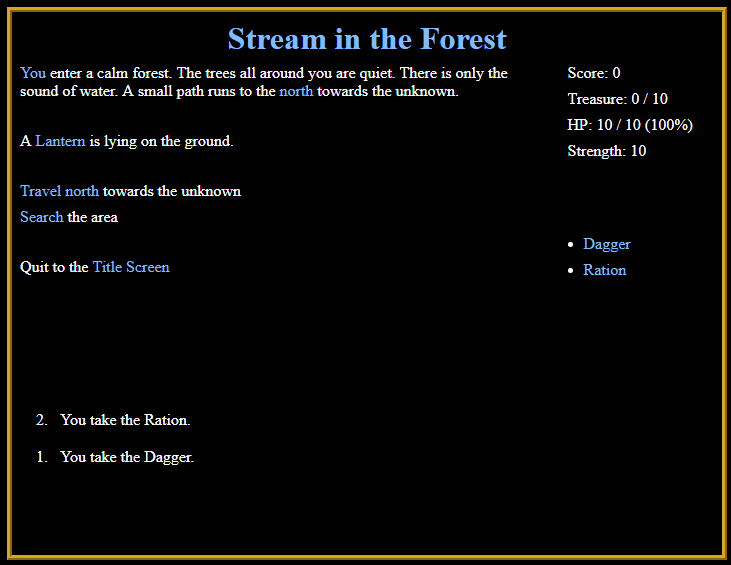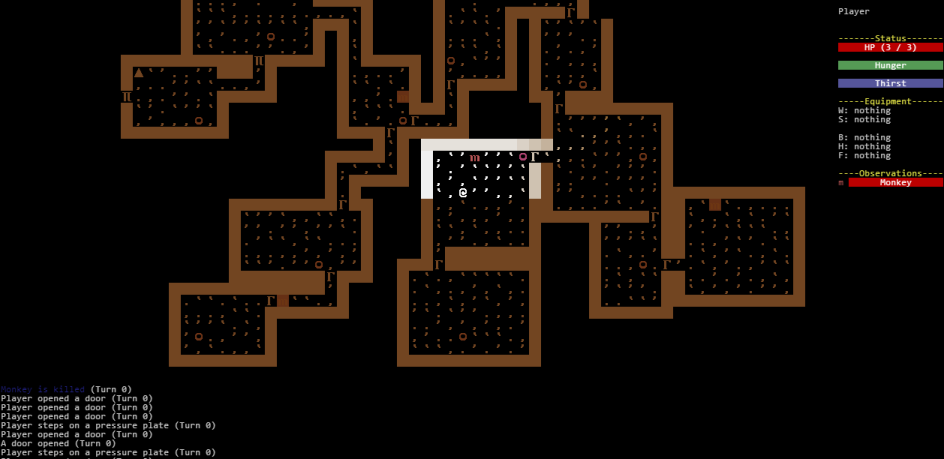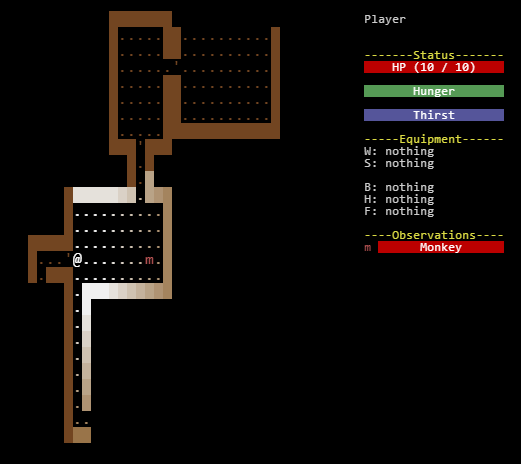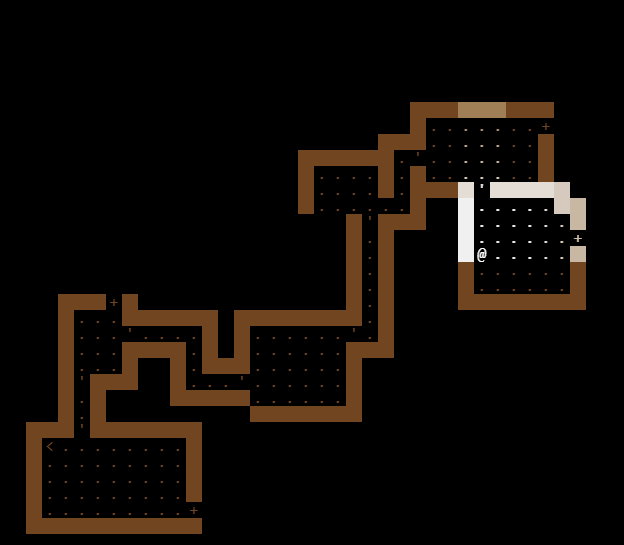Day 4 and Day 5 were spent revising the UI and the dungeon generation algorithm. Everything looks much better, though I don't like how long that took. The dungeons were far too linear, and now they aren't quite as bad. I've added several test rooms but it doesn't have enough game play yet that I think it's worth demoing. It's unfortunate, but I may only get 1 day of a demo. That said, tomorrow (Day 6) looks good for adding more rooms, items, and some monsters finally.
And, to Ekolis' question, it's a text adventure like Zork but with a bit more combat and the dungeon, rooms, puzzles, and items are procedurally generated. Combat was not a focus for me, so it probably won't be too interesting. I'm ok with that.
The puzzles won't be as elaborate as in some good text adventures (old or new) but at least they won't involve guessing the magic verb or phrase needed to solve them. It's more like you need to find one or more items and use them to get past a door, or pit, or a guard. Although the puzzles are generated safely (i.e., the item needed for a puzzle is never behind the puzzle's locked door) the interactivity of the game allows breaking them. So, if you're able to break a door, then it doesn't matter if it was locked or you never found the key. Breaking puzzles like that is not correct according to adventure games but it makes total sense for a roguelike.


